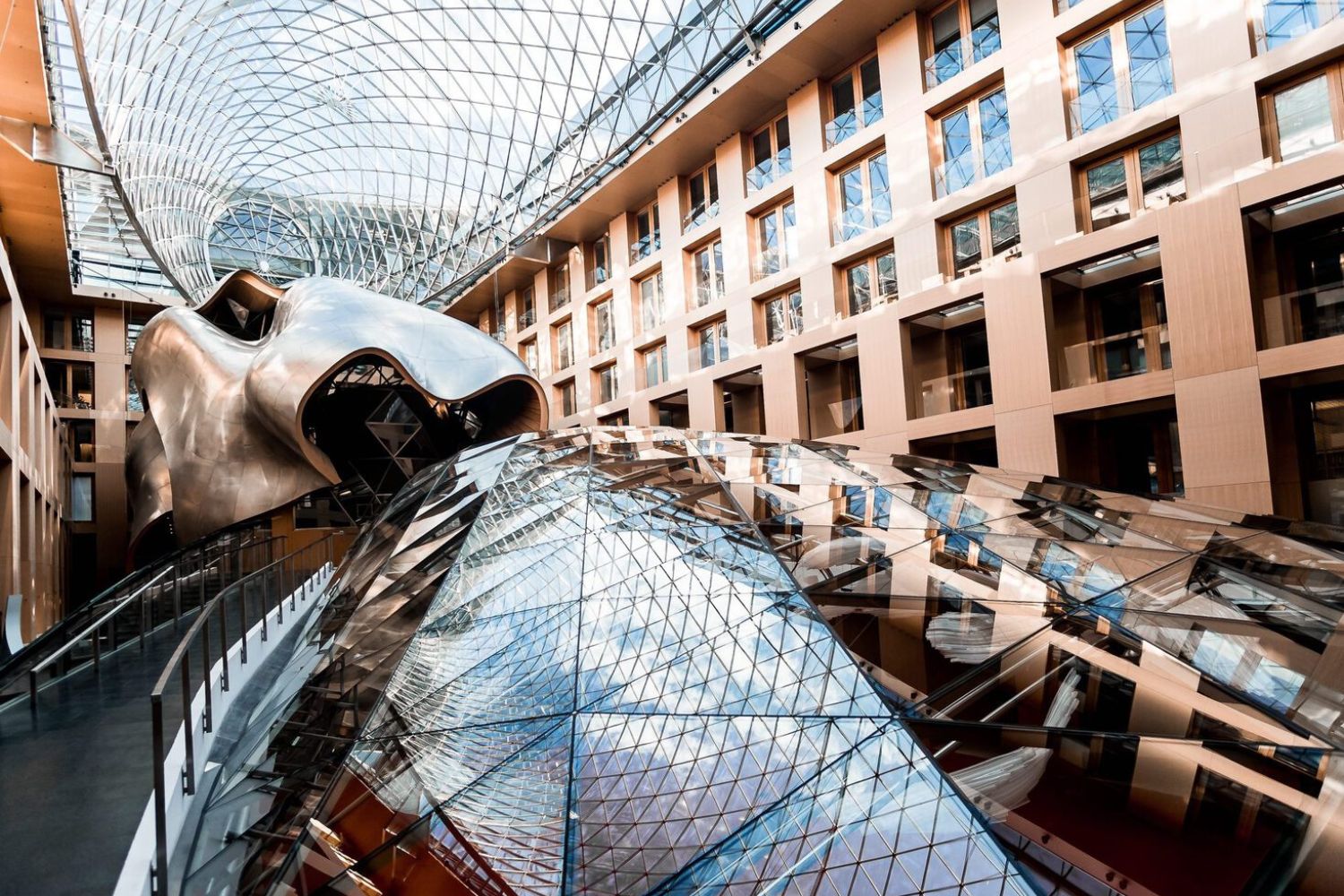- Home
- Articles
- Architectural Portfolio
- Architectral Presentation
- Inspirational Stories
- Architecture News
- Visualization
- BIM Industry
- Facade Design
- Parametric Design
- Career
- Landscape Architecture
- Construction
- Artificial Intelligence
- Sketching
- Design Softwares
- Diagrams
- Writing
- Architectural Tips
- Sustainability
- Courses
- Concept
- Technology
- History & Heritage
- Future of Architecture
- Guides & How-To
- Art & Culture
- Projects
- Interior Design
- Competitions
- Jobs
- Store
- Tools
- More
- Home
- Articles
- Architectural Portfolio
- Architectral Presentation
- Inspirational Stories
- Architecture News
- Visualization
- BIM Industry
- Facade Design
- Parametric Design
- Career
- Landscape Architecture
- Construction
- Artificial Intelligence
- Sketching
- Design Softwares
- Diagrams
- Writing
- Architectural Tips
- Sustainability
- Courses
- Concept
- Technology
- History & Heritage
- Future of Architecture
- Guides & How-To
- Art & Culture
- Projects
- Interior Design
- Competitions
- Jobs
- Store
- Tools
- More
Architectural Evolution of Stadiums: From Ancient Arenas to Modern Marvels
Explore the architectural evolution of stadiums from ancient amphitheaters to modern marvels, showcasing their cultural, historical, and technological advancements. Discover how sustainability, cutting-edge design, and fan-centric innovations are shaping the future of these iconic multi-functional spaces, reflecting humanity's creativity and adaptability through the ages.

Stadiums have always been more than just places for sports—they’re monuments to human ingenuity and cultural expression. From the ancient amphitheaters of Rome to the sleek, tech-driven arenas of today, their designs tell the story of how societies evolve and adapt. Each era leaves its mark, blending functionality with the aesthetics of the time.
As our needs and technologies have advanced, so too have stadiums transformed. They’ve gone from simple open-air constructions to architectural marvels that push the boundaries of engineering. Along the way, they’ve become hubs for not just games but also concerts, community events, and global spectacles.
Understanding the architectural evolution of stadiums helps us appreciate the innovation and vision behind these iconic structures. It’s a journey through history, culture, and cutting-edge design that continues to shape the way we gather and celebrate. Let’s explore how these giants have evolved over time.

Table of Contents
ToggleThe Origins Of Stadium Design
Early stadium designs focused on accommodating large audiences for public spectacles. Ancient Greece introduced the earliest examples, with stadiums like the Olympia Stadium holding athletic events such as the Olympic Games. These structures emphasized functionality, using elongated, U-shaped designs with open-air seating carved into natural hillsides.
Roman architects expanded on Greek concepts by incorporating engineering advancements. The Colosseum in Rome, completed in 80 CE, featured a revolutionary circular design, tiered seating for over 50,000 spectators, and the use of concrete and arches. This allowed for multi-purpose usage, hosting gladiatorial games, animal hunts, and public executions.
Beyond Greece and Rome, other ancient cultures developed unique stadium forms. Pre-Columbian civilizations in Mesoamerica built ball game courts like the Great Ballcourt of Chichén Itzá. These spaces utilized flat playing areas flanked by sloped walls and integrated symbolic carvings reflecting cultural and religious significance.
While designs varied across regions, early stadiums shared common traits: open-air layouts, tiered seating, and integration with surrounding landscapes. These elements laid the foundation for future architectural innovation, creating enduring forms that continue to influence modern stadium construction.
The Evolution Through Ancient Cultures
Stadium architecture began as a reflection of the values and priorities of ancient societies. By examining the contributions of different cultures, we see how functional design and symbolic meaning intertwined.

Greek and Roman Influence
Greek stadiums emphasized simplicity and harmony with nature. Structures like the Olympia Stadium, dating back to the 8th century BCE, used elongated U-shaped layouts with stone or earthen seating. They aligned with the surrounding landscape to enhance spectator experience and represent the Greek ideals of balance and order.
Roman architects advanced these designs by introducing monumental infrastructure, such as the Colosseum in 80 CE. This structure featured a circular design, four-tiered seating for over 50,000 spectators, and an elaborate system of entrances and exits, called vomitoria, to manage crowd flow. Romans also developed substructures, enabling varied events like gladiatorial combats, naval reenactments, and public ceremonies. Their innovations in material, including the use of concrete, allowed for larger, more durable stadiums that influenced architectural practices for centuries.
The Role of Religious and Cultural Events
Stadium designs often integrated religious and cultural symbolism unique to each society. For example, in ancient Greece, stadiums like Delphi and Olympia were tied to sacred rituals, with events such as the Olympic Games honoring Zeus. These events combined athletic competitions and religious ceremonies to reinforce communal identity and values.
In Mesoamerican cultures, stadiums like the Great Ballcourt of Chichén Itzá, constructed around 900 CE, served as venues for the Mesoamerican ballgame. These structures featured stone walls with carved depictions of gods and mythological stories. The games held religious significance, often involving ritualistic elements and reinforcing the spiritual beliefs of the society. Such cultural integrations highlight how ancient stadiums were more than functional—they were places of shared tradition and ideology.
Modern Transformations In Stadium Architecture
Modern stadiums showcase the impressive evolution of architectural design, blending functionality with technological advancements. These structures are now central to urban landscapes, serving diverse roles beyond sports entertainment.

The Impact Of Industrialization
Industrialization dramatically shifted stadium construction by introducing new materials and engineering techniques. Steel and reinforced concrete enabled larger, more durable structures with inventive designs. For example, Wembley Stadium in London, completed in 1923, utilized reinforced concrete to accommodate 127,000 spectators, emphasizing mass capacity and structural efficiency. Urbanization also fueled the need for central stadium locations, making these venues essential urban hubs.
Standardized manufacturing processes lowered construction costs while enabling modular designs for rapid development. Roofs and cantilevered structures became possible, enhancing spectator comfort and providing weather protection. This evolution solidified stadiums as both functional and cultural symbols of modernization.
Incorporation Of Technology
Technology has revolutionized modern stadiums, enhancing both design and user experience. Retractable roofs, like in SoFi Stadium in Los Angeles, allow for multifunctional use by adapting to various weather conditions and event types. High-resolution LED displays and advanced lighting systems create immersive environments for spectators, making the experience more engaging.
Innovative sustainability features, such as solar panels and rainwater harvesting, have addressed environmental concerns. Levi’s Stadium in Santa Clara is noted for its energy-efficient design, including a green roof and water-recycling systems. Smart technologies, including real-time crowd analytics and wireless connectivity, ensure seamless event management and improved audience convenience. These innovations redefine how we interact with and appreciate stadium architecture.
Sustainable And Eco-Friendly Stadiums
Sustainable stadiums emphasize reducing environmental impact while maintaining high functionality and audience experience. Modern designs integrate eco-friendly practices to address energy efficiency, material usage, and environmental preservation.

Green Building Practices
Green building strategies prioritize sustainable materials and enhanced energy efficiency. Many stadiums now incorporate recycled or locally sourced materials to minimize carbon footprints during construction. For example, the Mercedes-Benz Stadium in Atlanta used 6,500 tons of recycled steel in its framework. Advanced insulation systems and water-saving fixtures, like low-flow plumbing, support resource conservation.
Innovative designs also focus on reducing heat islands through green rooftops and strategic shading systems. For instance, the Singapore National Stadium employs a retractable roof and natural ventilation to lower energy demands in a tropical climate. These measures align with global sustainability goals, reducing operational costs while promoting an eco-conscious approach.
Renewable Energy Integration
Stadiums are increasingly adopting renewable energy sources to power their operations. Solar panels feature prominently, such as at Levi’s Stadium, which generates 375kW of power through rooftop photovoltaic systems. Wind turbine installations, like those at the Amsterdam ArenA, further diversify energy sources while cutting emissions.
Energy storage systems enhance efficiency by balancing energy supply and demand. The Johan Cruyff ArenA in Amsterdam uses a massive battery system repurposed from electric car batteries to store renewable energy and stabilize grid operations. These integrations reinforce the commitment to reducing environmental impact and showcase how stadiums can serve as models for sustainable urban infrastructure.
Iconic Stadium Designs Of The 21st Century
Stadiums in the 21st century represent a fusion of cutting-edge technology, sustainability, and aesthetic appeal. They’ve redefined urban landscapes and elevated fan experiences to unprecedented levels.

Design Innovations
Modern stadiums utilize groundbreaking architectural techniques to create visually striking and functionally exceptional designs. For example, the Beijing National Stadium, known as the “Bird’s Nest,” features an intricate steel lattice structure, blending artistry with engineering. Allianz Arena in Munich introduced a façade of inflated ETFE plastic panels that change color, setting a new standard for dynamic exteriors.
Innovative structures now maximize multi-functionality while adapting to diverse events. Tottenham Hotspur Stadium incorporates two retractable surfaces, enabling seamless transitions between soccer, NFL games, and concerts. Designers also emphasize environmental consciousness, as seen in Qatar’s Stadium 974, constructed from modular shipping containers to allow disassembly and reuse.
Fan-Centric Features
Stadiums of this era prioritize immersive and personalized fan experiences. High-definition displays and 360-degree video boards, like those in AT&T Stadium, offer unparalleled visual engagement. Enhanced connectivity, including robust Wi-Fi networks and 5G integration, ensures fans can stream, share, and access real-time stats without interruptions.
Seating innovations prioritize comfort, with adjustable layouts and premium zones such as SkyLounges or exclusive club suites. Features like Levi’s Stadium’s mobile apps provide conveniences including digital ticketing and food delivery directly to seats, redefining audience interaction. These elements position 21st-century stadiums as immersive entertainment hubs tailored to the modern fan.
The Future Of Stadium Architecture
Stadium architecture continues to evolve, integrating technology, sustainability, and adaptability to meet modern demands. Emerging trends are transforming stadiums into smarter, more resilient spaces that address global challenges.

Trends In Smart Stadiums
Smart stadiums utilize advanced technologies to enhance operations and fan experiences. IoT systems optimize facility management by monitoring lighting, temperature, and crowd movements in real-time. Digital ticketing and contactless payments streamline entry and transactions, reducing wait times. Enhanced connectivity, including 5G networks, improves streaming capabilities, offering fans interactive experiences through augmented and virtual reality features. Stadium apps provide real-time updates, navigation assistance, and personalized services, promoting seamless engagement.
Artificial intelligence (AI) systems deliver predictive analytics for event planning, improving crowd management and ensuring safety. Advanced security systems, such as facial recognition and surveillance drones, enhance venue protection. Examples like State Farm Arena and AT&T Stadium demonstrate the integration of smart technology to redefine operational efficiency and user satisfaction.
Adapting To Global Challenges
Stadiums address global challenges by prioritizing sustainability, resilience, and inclusivity. Climate-responsive designs incorporate natural ventilation, renewable energy sources, and efficient water management systems to mitigate environmental impact. For instance, Qatar’s Al Janoub Stadium features aerodynamic roofing to cool spaces effectively in hot climates.
Pandemic-induced challenges have reshaped stadium operations, prompting adaptive designs for physical distancing, improved airflow, and contactless interactions. Hybrid models, combining in-person attendance with virtual experiences, cater to diverse audience preferences. Additionally, inclusive designs ensure accessibility, providing facilities for individuals with disabilities, such as wheelchair-accessible seating and sensory-friendly zones.
Stadium architecture faces challenges with versatile solutions, ensuring functionality and innovation in the ever-changing global landscape.
Conclusion
Stadiums have transcended their original purpose to become iconic symbols of innovation, culture, and human ingenuity. Their architectural evolution reflects our ability to adapt, innovate, and reimagine spaces that unite communities and inspire awe.
As we continue to push boundaries with technology, sustainability, and design, stadiums will remain at the forefront of architectural progress. They’re not just structures—they’re living testaments to our shared history and vision for the future.
The journey of stadium architecture is far from over, and we’re excited to see how these spaces will evolve to meet the demands of a changing world while continuing to captivate and connect us all.
- ancient arenas to modern stadiums
- ancient Roman arenas
- architectural development of sports venues
- architectural marvels in sports
- architecture of famous stadiums
- engineering behind stadiums
- evolution of sports architecture
- evolution of stadium architecture
- future of stadium design
- high-tech stadiums
- history of stadium design
- iconic stadiums around the world
- innovative stadium structures
- modern stadium architecture
- sports venue design evolution
- stadium architecture case studies
- stadium architecture timeline
- stadium design through history
- stadium design trends
- sustainable stadium architecture
Submit your architectural projects
Follow these steps for submission your project. Submission FormLatest Posts
Furniture Movers by the Hour: Complete Guide to Hourly Moving Services in 2025
Introduction Furniture movers by the hour are professional moving services that charge...
Where To Charge Rivian: Complete Guide to Charging Locations and Networks
Introduction Rivian electric vehicle owners can charge their vehicles through multiple charging...
Frank Gehry Architecture: Style, Innovation and Iconic Works
Frank Gehry is one of the most influential architects of our time,...
The Dialogue Between Islamic Architecture and Modern Design
Explore Islamic architecture and modern design: climate-smart strategies, case studies, and courtyards,...












Leave a comment